Managerial changes are often followed up by a boost in the performance of the teams, but it is rarely followed by consistency and attractive football. One of the teams that make an exception to the rule are Athletic Club, not because they haven’t improved their performance, but because they did show consistency in it, losing only a couple of their last 13 games under the new manager in charge, Marcelino.
An impressive run followed by exciting displays put them in the La Liga top 10 with a small but real chance of reaching a UEFA Europa Conference League qualification spot.
Marcelino who previously managed Valencia revitalised his favoured 4-4-2 and it turned out to be perfectly suited for the Basque side who won seven of their last 13 meetings.
The 55-year-old brought Athletic Club on the table and made them a serious opponent with an interesting and rather intense pressing strategy.
This tactical analysis examines the team’s current tactics under their new manager and how his distinguished approach led them to the boost in performance that they saw from the beginning of 2021.
Formations and main traits
The first noticeable change that Marcelino made was changing the system. While the 4-2-3-1 was previously the team’s most-used formation, with his arrival, he decided to implement his favoured 4-4-2 (that he used with his previous teams). By doing this, he tried bringing more balance providing defensive stability but also turning Athletic into a team with smooth and dangerous transitions.
He would rarely switch to a different set-up and when he does it is usually a variation of the 4-4-2 (4-4-1-1 or 4-2-2-2). The players adjusted very well to that scheme and his playing style, being able to have better coverage on both flanks and position better during the build-up offering more options in midfield.
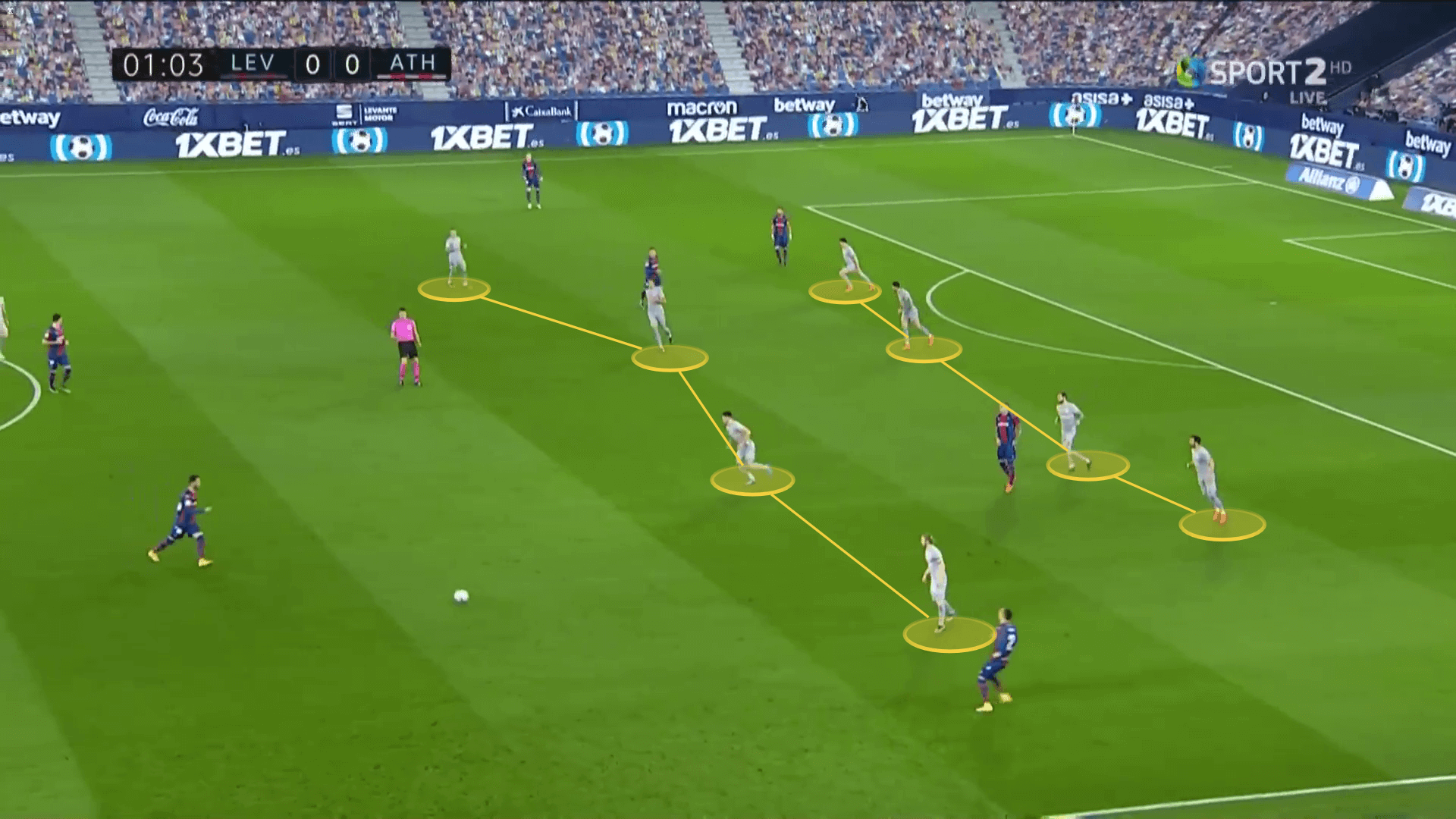
The team try to keep quite a compact shape with limited space between the lines and play out wide whenever they enter the more advanced areas. They would most frequently build-up from the back and try to advance the ball through the central players and then use the width provided by the wingers.
They rely on a lot of movement and keeping their structure so they can control the game in the opposition half. In attack, Los Leones rely on their crossing efforts where they often cross from deep in efforts to bypass the opposition press and deliver the ball to goalscoring positions.
Athletic Club have a few strong individuals upfront which helps them in being more versatile in the final third.
Marcelino relies mainly on the previous regular starters for the team. On the goal they have Unai Simón, while for the centre defenders he picks between Íñigo Martínez, Yeray Álvarez and Unai Núñez. He usually relies on Ander Capa and Yuri Berchiche for the important full-back role. He likes to switch things up in central midfield but still, the most regular starters are Dani García and Mikel Vesga. For providing width he most frequently chooses from Iker Muniain, Alex Berenguer, Óscar De Marcos and Mikel Balenziaga. The manager would most likely pair Iñaki Williams and Raúl García in front of the goal.
It is noticeable that the team don’t rely on their young players a lot and Marcelino as well as his predecessor preferred using the more experienced players.
Ball progression and positioning
Los Leones prefer building up from the back using their centre-backs who would then either spread out to the full-backs or to the central areas depending on the opposition’s press. The defensive line would usually be highly positioned when in possession with the full-backs moving up to the central line. That’s done in aim for quicker ball progression and for overloading the opposition half, which often leads to them having control of the game out there.
Despite trying to use the central areas for breaking through their opponents’ pressing systems, they are most likely to progress the ball and exploit the opposition through the flanks. The partnership between the full-backs and the wingers is very important in their build-up for them to be able to efficiently progress the ball using positional changes and rotation. The full-backs’ movement allows their fellow wide players more freedom and chances to exploit the half-spaces.
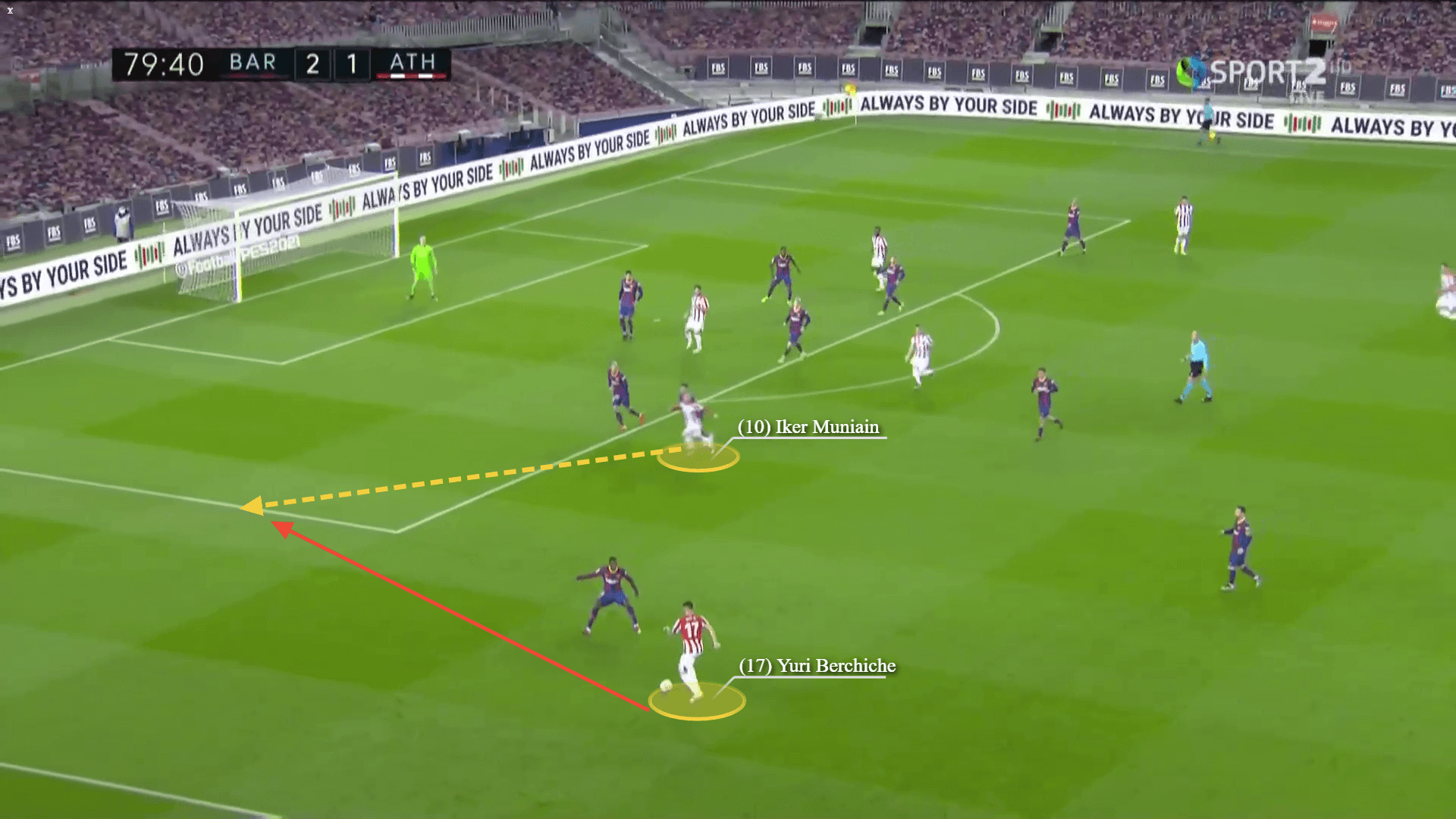
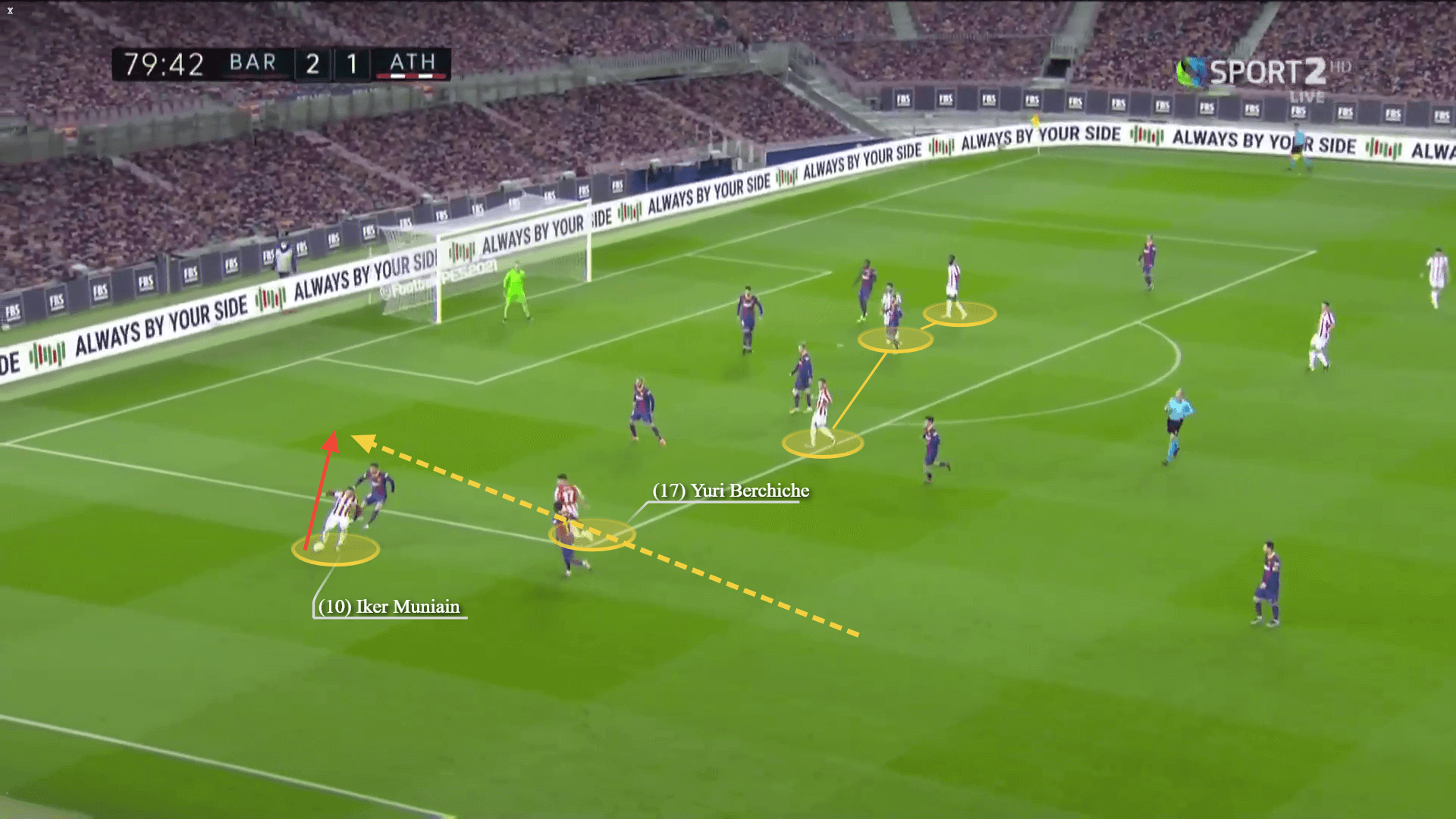
The defensive midfielders play a crucial part in ball progression as they help in opening the passing lanes with their positioning. They provide the backline with passing options and also with spreading out wide which is extremely useful against teams that press high.
Whenever the team meet resistance in the more advanced areas they would switch up play in efforts to bypass the press and not only retain possession of the ball but also try to expose the opposition through the underloaded areas.
They use a lot of movement and short passing for retaining possession, averaging 403.47 passes per 90.
Attacking ventures and versatility
The team are often overcommitted to their attacking actions. Proof of that is that 55.63 of their passes are passes to the final third. They constantly try to push higher and are among the La Liga teams with the most passes to the advanced areas on average. They are good at taking advantage of these opportunities and creating chances when they have the ball upfront.
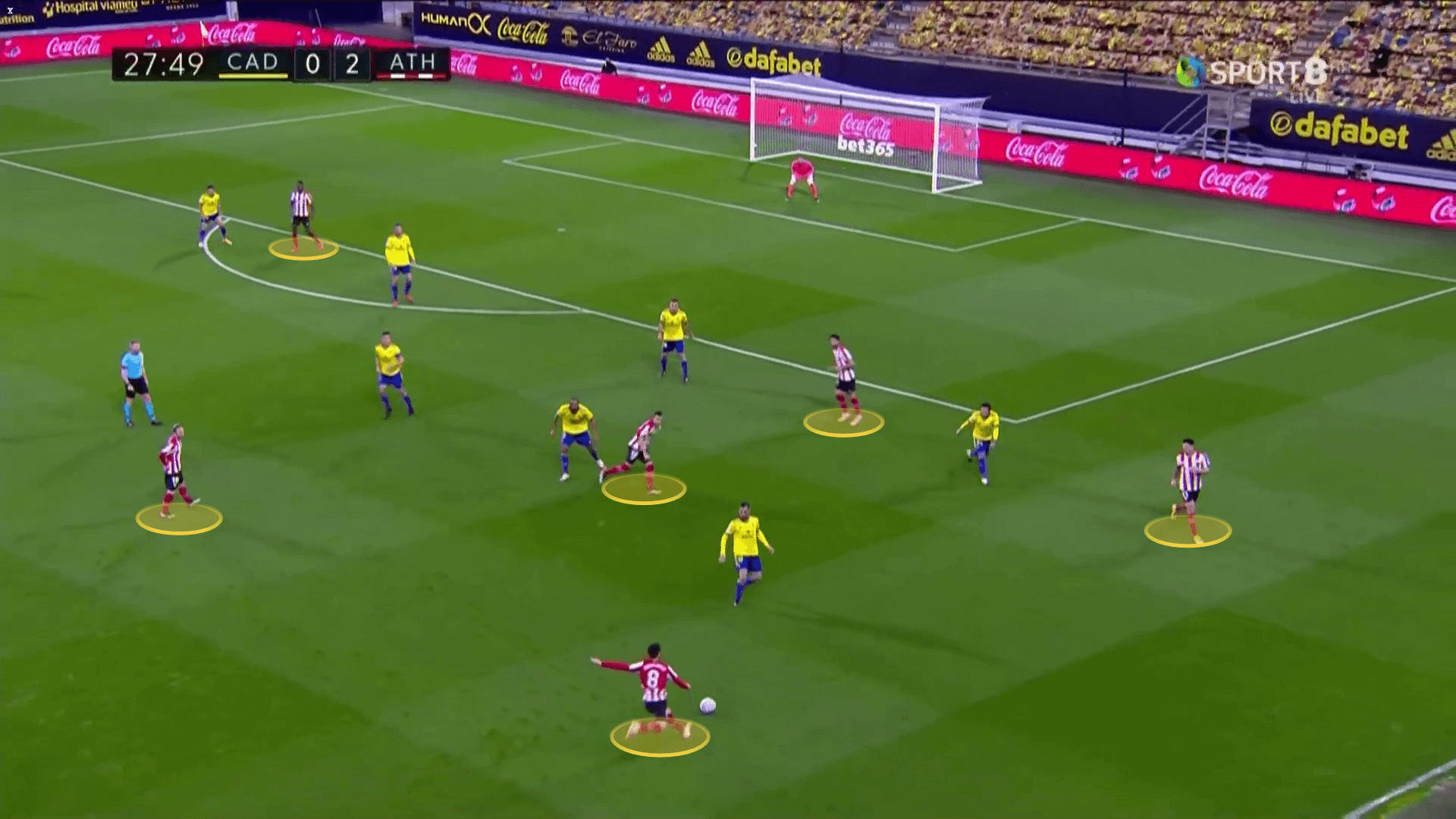
Both wingers are good at passing and providing through balls which increases the team’s efficiency in front of the goal. Their strengths are different and this provides more versatility in attack. Muniain is good at holding on to the ball and dribbling which helps the team in ball progression while Berenguer provides a direct threat with his set-piece abilities.
What makes the team successful in attack is the players’ movement and actions complement each other. Having players with different strengths allows breaking through different defensive set-ups being able to create chances in multiple scenarios.
Williams’ and García’s movement in and around the box support the wingers’ actions and help in having better coverage. That’s reflected in their scoresheet where they have multiple goalscorers showing their potential in attack.
As mentioned, they most frequently rely on crossing efforts for delivering the ball to the box. They are the second team to send the most crosses per 90 after Eibar. They try to expose the opposition with 19.5 efforts on average per game. What makes the difference though is their crosses from deep. Often when they find it hard to break through the oppositions’ defences they would go crosses from deep, delivering the ball to the box and creating goalscoring opportunities. This also happens whenever their opponents anticipate their switch of play and they quickly need to find a solution for progressing the ball.
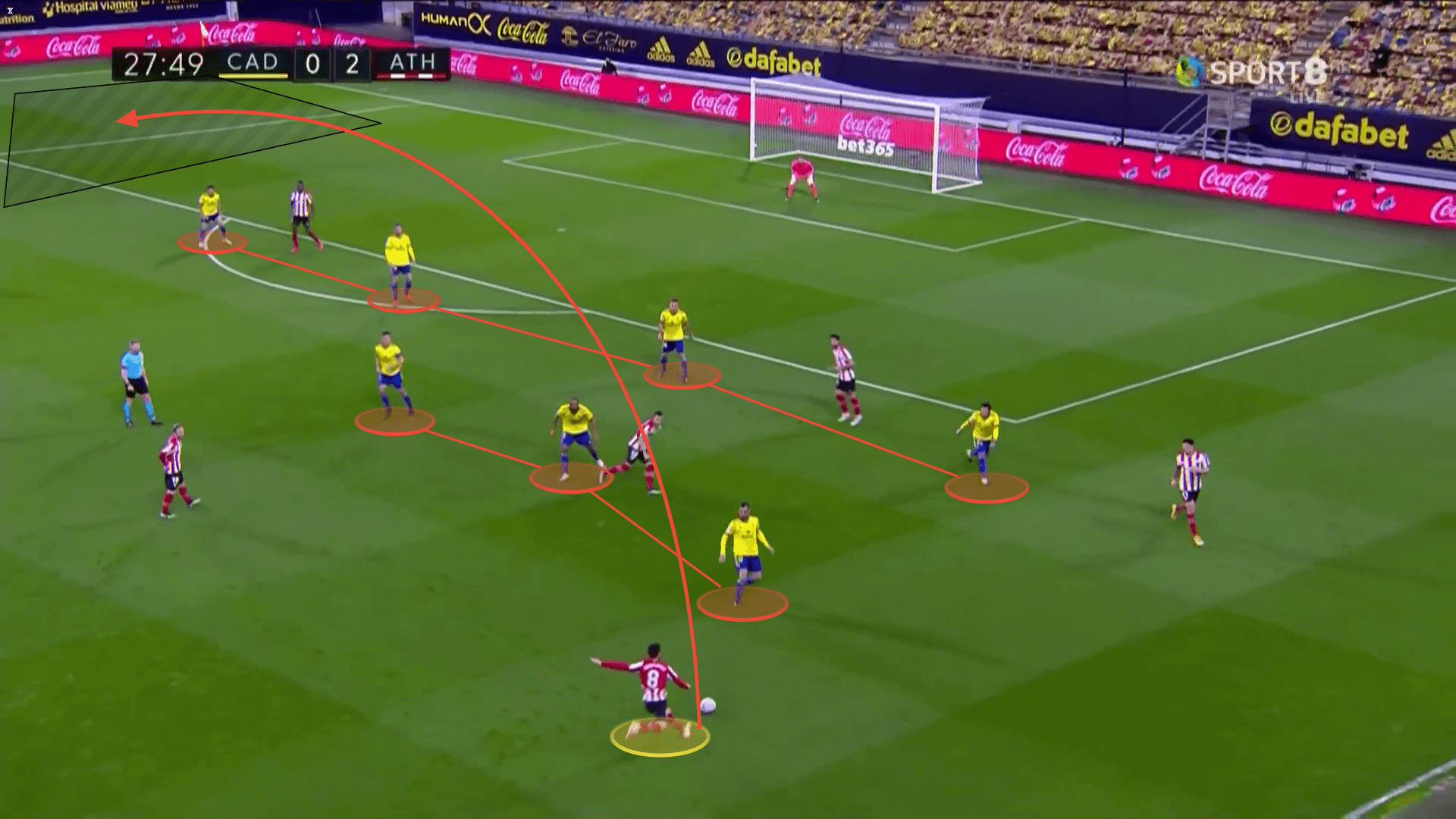
The over-commitment to the flanks doesn’t make the central players less important though. The team like to counter-attack rather often and that’s thanks to the centre-backs and the defensive midfielders who would initiate these counters. They would again often spread out wide to finish off the attack and give time and space for entering the box with more bodies but they would also take on their opportunities centrally.
Athletic Club also tend to shoot from distance and often take advantage of their set-piece chances. This allows them to threaten the goal more often and results in their 10.53 shots per 90 on average. In the time of writing, they have scored nine goals from set-pieces (including penalties) in La Liga.
Pressing strategy and defensive performance
They do rather well defensively too. They would usually keep their 4-4-2 structure off the ball but it is often disturbed by their man-to-man marking strategy and pressing efforts. Their pressing is one of the reasons for their success. Although they often struggle with inaccurate passes which lead to losing possession their constant pressure on the opposition allows them to win the ball back and create changes.
Their average PPDA rate of 9.33 ranks them in the top five teams in the league with the highest press intensity. They wouldn’t necessarily always press high but with their man-to-man approach, they constantly attack the ball carrier and try to recover the ball.
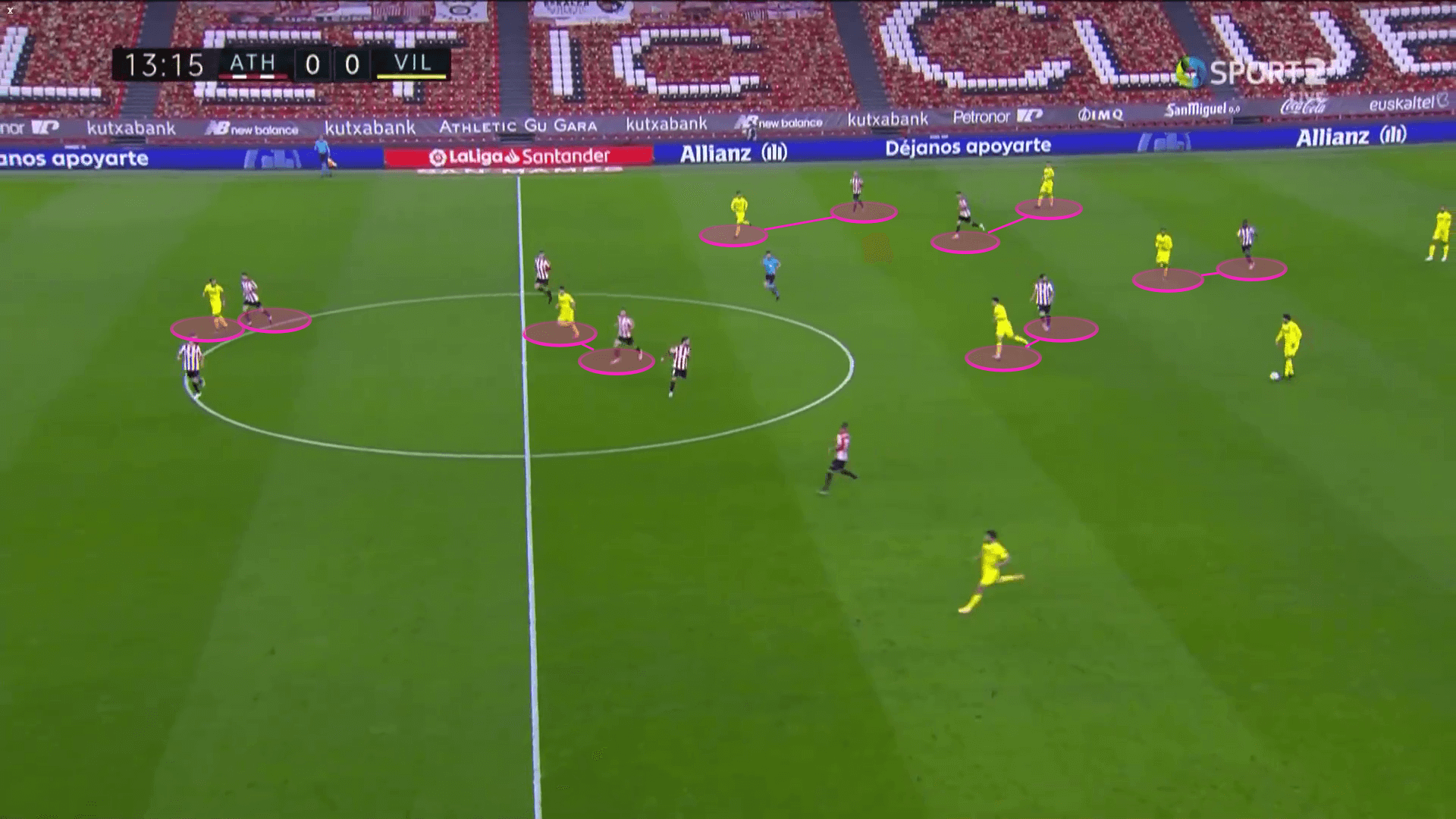
When it comes to defending in their own half they do have some flaws. They would though often overcommit to certain areas and their efforts to block the ball carrier from progressing the ball would leave gaps in the last line of defence. They allow being dragged out of position which gives their opponents to enter the box and to find spaces for through balls and crosses.
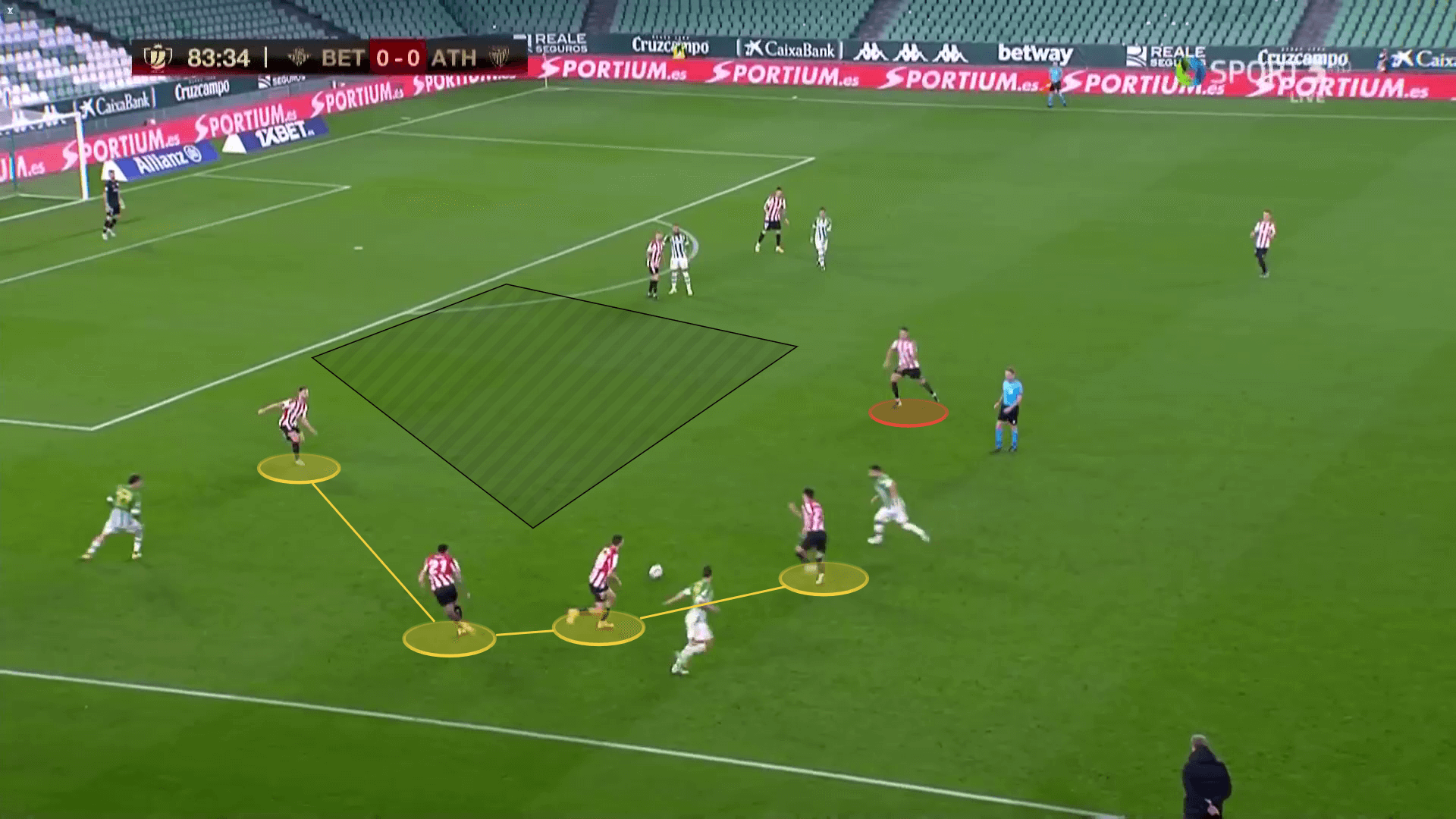
Despite their solid aerial performance, the team have some struggles in defending set-pieces too. They have conceded six goals from set-plays in the league so far which often turns out to be their biggest weakness.
Thanks to their pressing efforts they concede a low number of shots though (7.88 on average in the league) although they do allow their opponents to shoot from quite dangerous areas.
Conclusion
As our analysis showed, Marcelino’s 4-4-2 helped the team in being more creative and efficient upfront. While they had scored 17 goals in their last 13 games under Gaizka Garitano they have increased their numbers to 26 goals in 13 games under Marcelino.
Their defensive record has been almost the same, but it is still impressive having in mind they had three meetings with Barcelona in the last couple of months under Marcelino. They also defeated Real Madrid along the way.
Marcelino brought to the team balance and confidence. Athletic Club have transformed into exciting attacking team that use a lot of movement in the advanced areas for creating chances.
Although they only won one of their last five games, keeping their defensive record by only losing twice since Marcelino’s arrival shows their progress and drive for improvement.






Comments